Roasted Butternut Squash is simply the best! With beautifully caramelized exteriors and tender sweet interiors, you’ll be hooked after one bite!
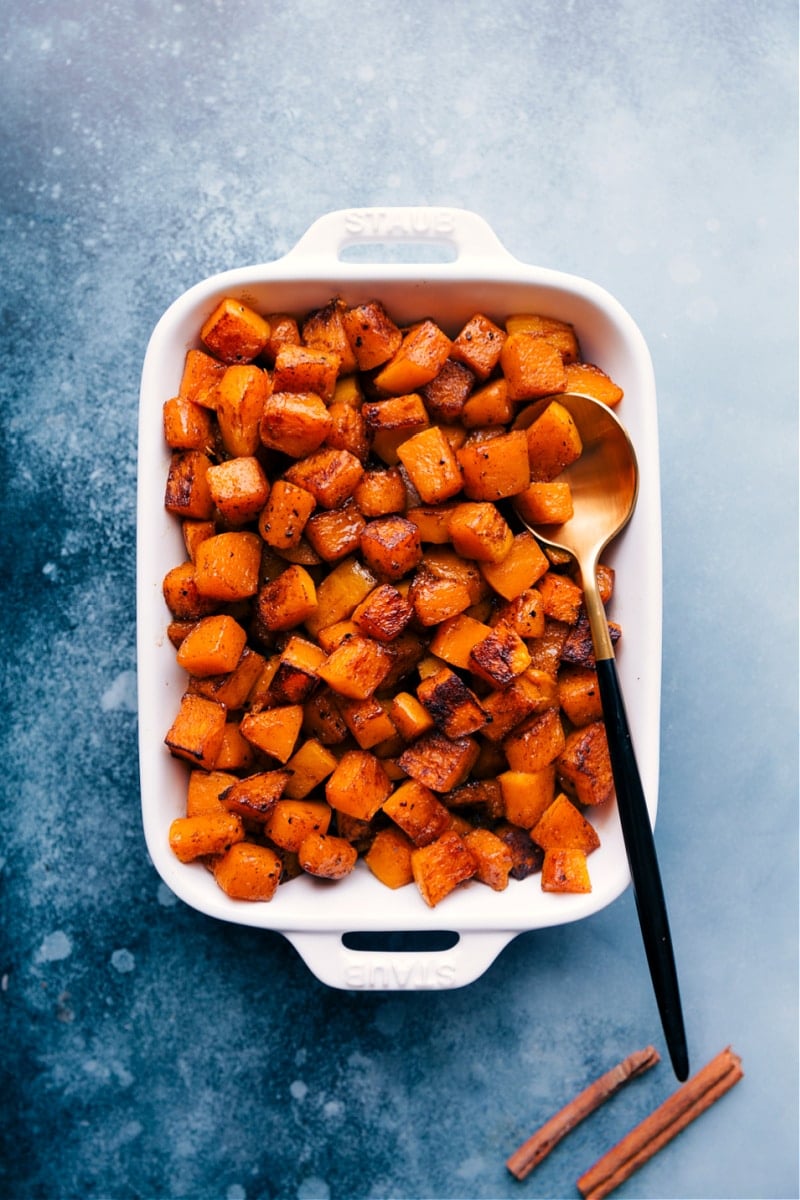
One Butternut Squash, Three Recipes!
Butternut squash is a favorite here, especially when roasted. It caramelizes perfectly, making it sweet with a tender center and crisp edges.
Here are three ways to prepare it:
- Basic Seasoning: Great for mixing into other dishes or for pure squash flavor.
- Savory Seasoning: Adds extra flavor for a hearty side dish.
- Sweet Recipe: Uses cinnamon, maple syrup, and brown sugar for a dessert-like treat.
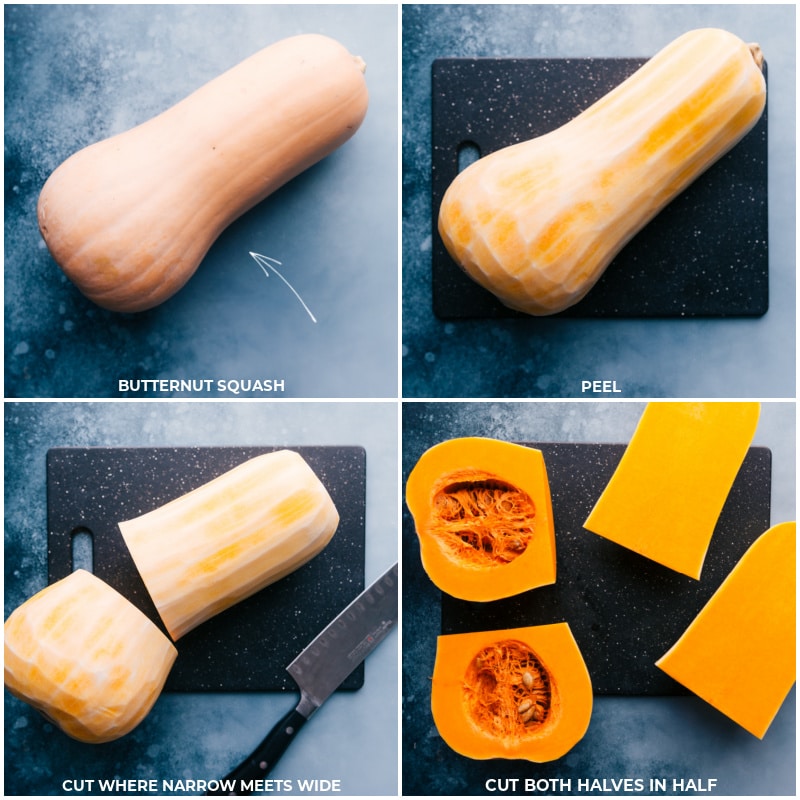
Shopping For Butternut Squash
To pick the perfect butternut squash:
- Choose one with a uniform beige color (darker beige is better).
- Avoid cuts, blemishes, green patches, and shiny skin (matte skin is best).
- Pick a squash that feels heavy for its size and sounds hollow when tapped.
Storing the Squash
Storage: Keep whole, raw, unpeeled squash at room temperature in a cool, dark place. Store peeled and chopped squash in the fridge in an airtight container.
Signs it’s bad: Toss the squash if it feels mushy, smells bad, has white spots or mold. After roasting, discard if it smells off or is slimy.
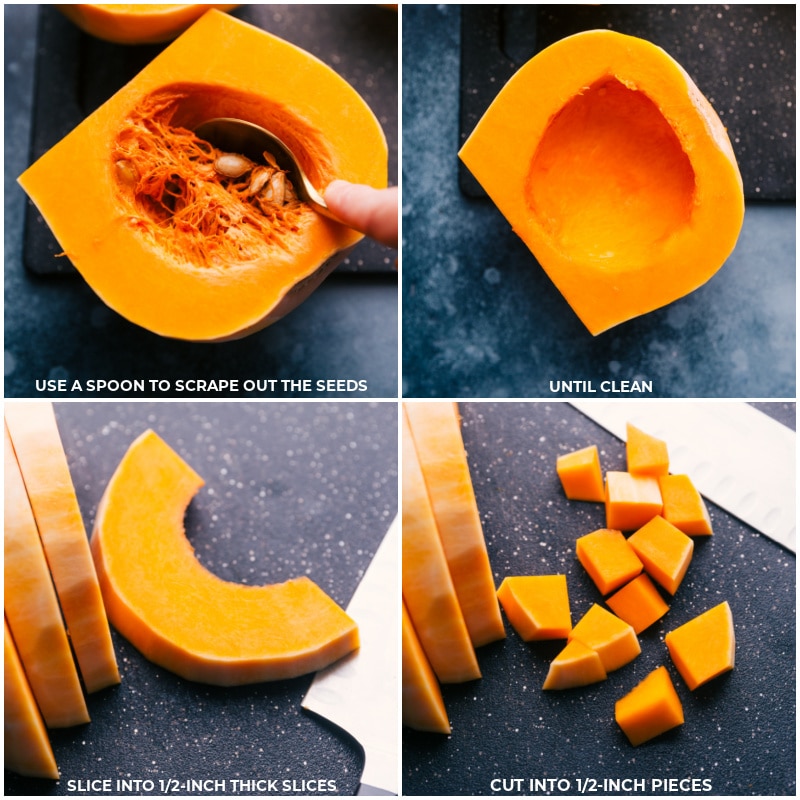
Tools That Are Nice To Have
Roasted Butternut Squash is easy to make, but cutting the squash can be tricky. That said, with the right tools, it’s much easier (and safer!) Here’s what we recommend:
- Vegetable Peeler: Easier for peeling the squash than cutting off the peels.
- Solid Cutting Board: Use a sturdy, nonslip board.
- Sharp Chef’s Knife: A sharp knife cuts faster and is safer.
- Large Baking Sheet: Use a large sheet (15×21 inches) to avoid steaming and ensure even roasting.
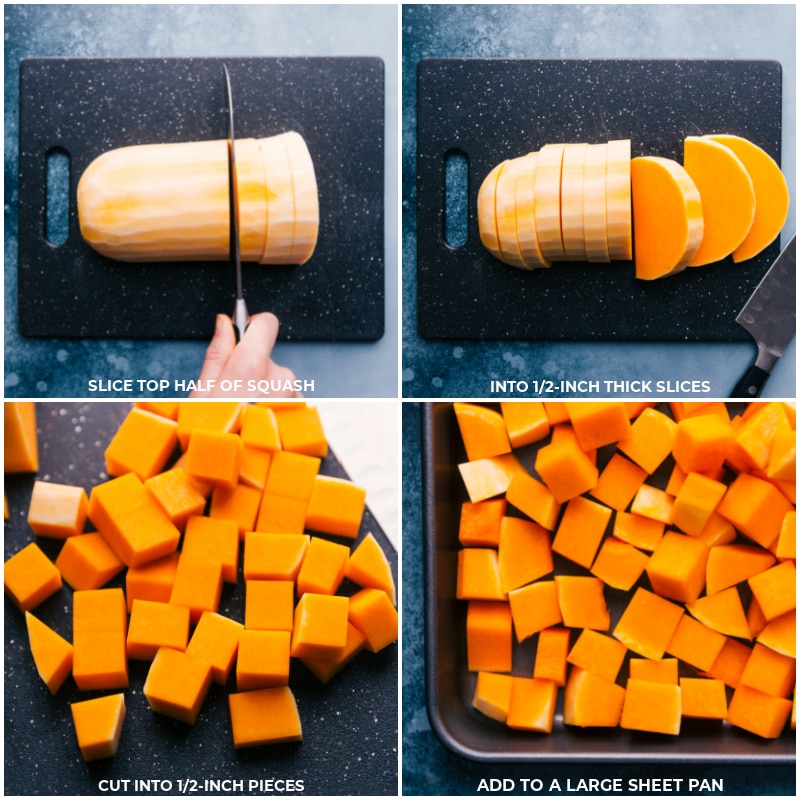
Roasting Tips
- Space Out the Squash: Spread cubes in a single layer on a large sheet pan. Avoid overcrowding to prevent steaming and get better caramelization.
- Toss Often: Gently toss the squash 2-3 times during roasting for even caramelization.
- Taste and Adjust: Taste a cube before serving and add more salt and pepper if needed.
- Dice Evenly: Cut squash into even cubes for even roasting.
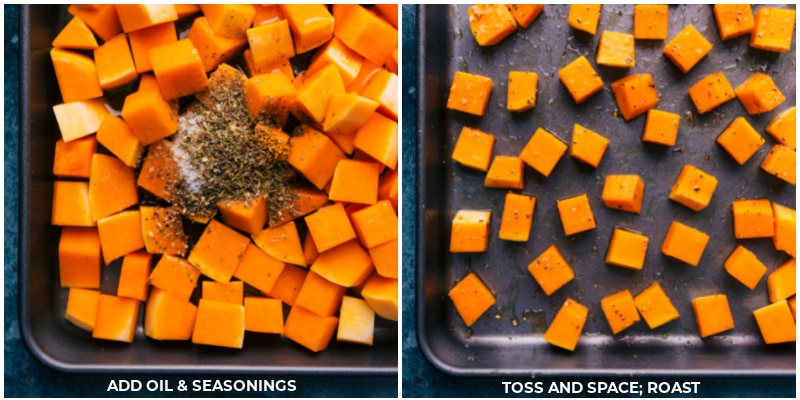
Storage
Storing Butternut Squash
- Whole Squash: Store in a cool, dark place. It lasts 1-3 months, depending on ripeness.
- Cut Squash: Keep in an airtight container in the fridge for 1-3 days. For longer storage, freeze in a single layer on a parchment-lined sheet pan until solid, then transfer to an airtight container or bag. It lasts up to 3 months.
- Cooked Squash: Store in an airtight container for 4-5 days. For freezing, follow the same steps as cut squash. Reheat in a skillet over low heat, microwave, or 350°F oven.
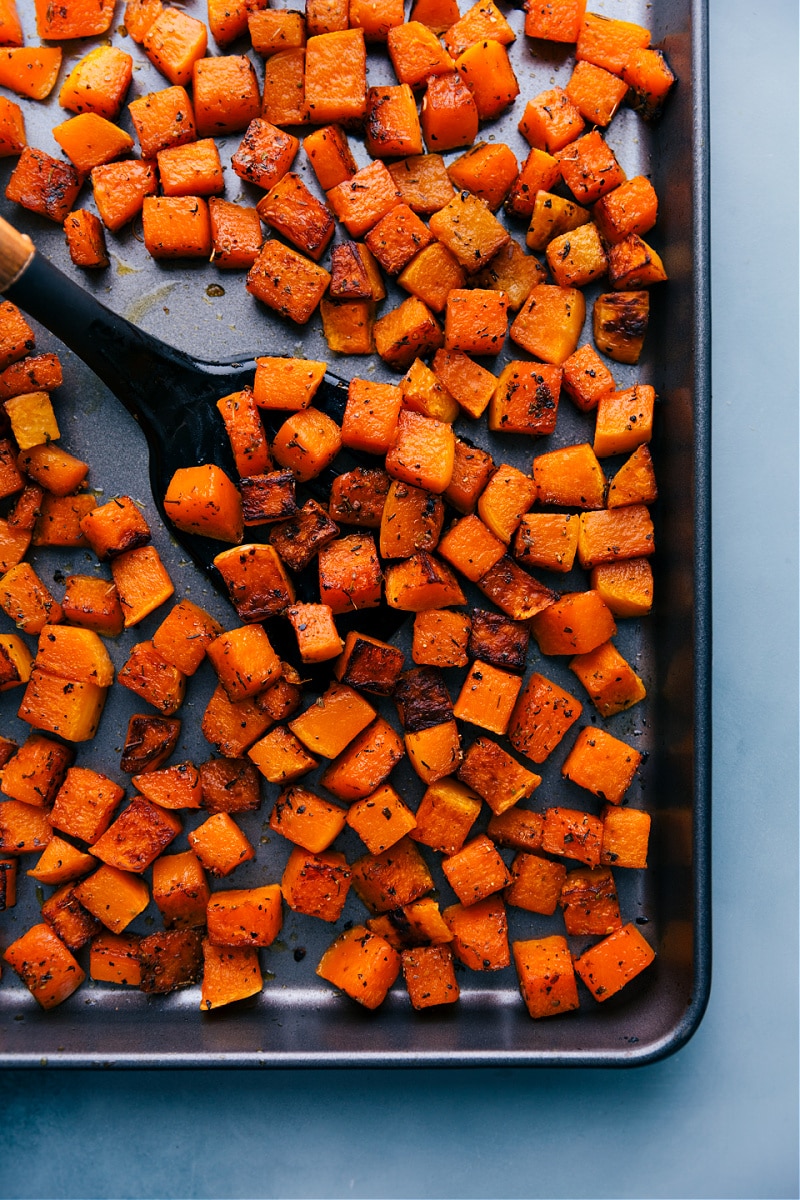
Roasted Butternut Squash FAQs
You can eat the skin of roasted butternut squash, but it’s tough. For the best texture, peel the squash before cutting and roasting.
1. Wash the squash and peel it with a sharp peeler. If you don’t have one, cut the squash in half, then peel with a knife.
2. Trim the top and bottom ends.
3. Slice the squash where the neck meets the base, then cut each piece in half.
4. Scoop out the seeds with a spoon.
5. Lay the pieces flat and cut them into cubes. Aim for even sizes, but they don’t need to be perfect.
Yes!
1. Wash and dry the seeds.
2. Preheat your oven to 275°F and line a baking sheet with parchment paper.
3. Toss 1 cup of seeds with 1 tablespoon of olive oil, a pinch of salt, and any desired spices like cinnamon.
4. Spread the seeds on the baking sheet and bake for 15 minutes, or until they start to pop.
5. Let them cool before eating.
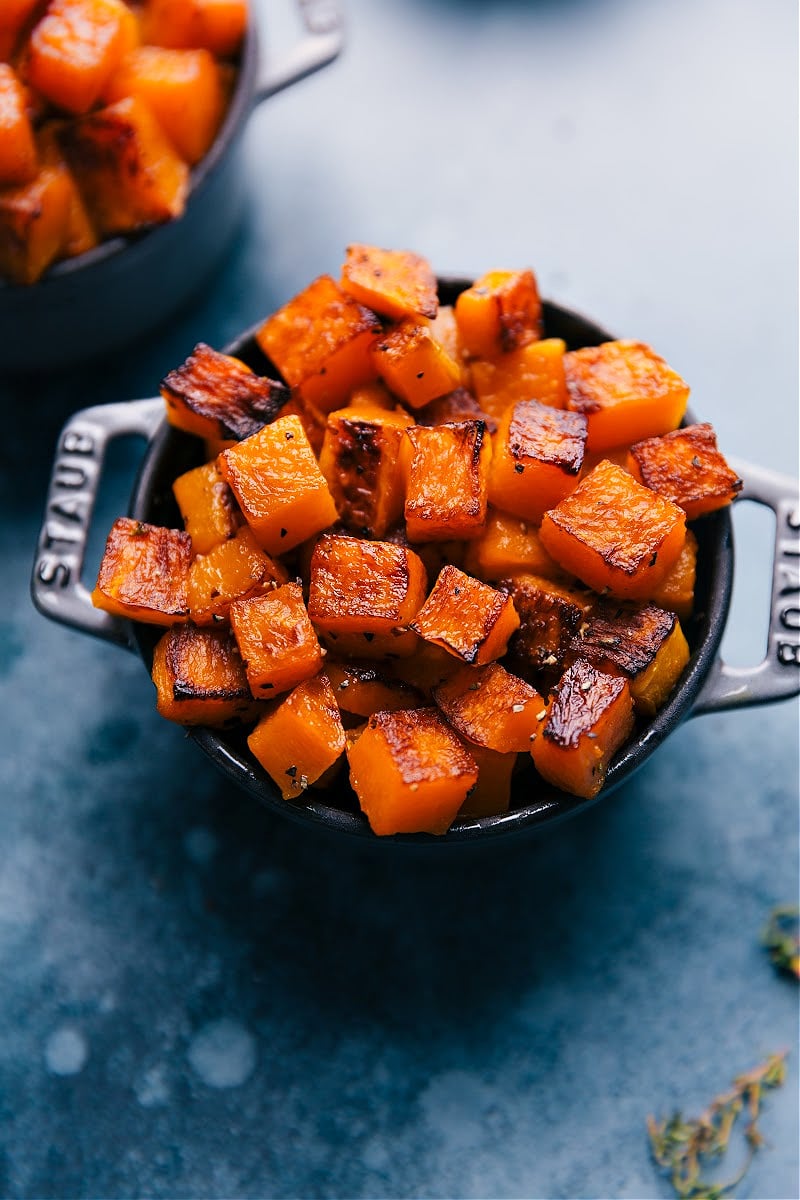
Quick Tip
Use any leftover squash in our Butternut Squash Pasta — yum!
More Vegetable Recipes
- Roasted Sweet Potatoes with sweet and savory preparation options
- Vegetable Curry with sweet potatoes and cauliflower
- Roasted Broccoli with fresh lemon
- Chicken Vegetable Soup with roasted vegetables
- Roasted Carrots with sweet and savory preparation options
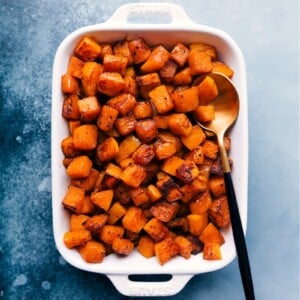
Roasted Butternut Squash
Equipment
- large sheet pan, 15 x 21-inch
Ingredients
Basic
Savory
- 8 cups (2 pounds) butternut squash peeled and cut into 1/2-inch cubes
- 1 tablespoon maple syrup see note 1
- 2 tablespoons olive oil
- 3/4 teaspoon salt
- 1/4 teaspoon pepper
- 1/4 teaspoon dried thyme
- 1 teaspoon Italian seasoning
- Fresh thyme optional
Cinnamon Butternut Squash
- 8 cups (2 pounds) butternut squash peeled and cut into 1/2-inch cubes
- 1-1/2 tablespoons melted coconut oil
- 1-1/2 tablespoons maple syrup
- 3/4 teaspoon salt
- 3/4 teaspoon ground cinnamon
- 1/4 teaspoon pepper
- 1 tablespoon light brown sugar optional
Instructions
- Preheat oven to 425°F (220°C). Grab an extra-large sheet pan (see note 2) or 2 smaller ones and set aside.
- Rinse the squash under cold water. Use a sharp vegetable peeler to peel the entire squash. Place the squash on a heavy-duty cutting board. Using a very sharp knife, cut off the top stem and about 1/4th-inch from the bottom. Cut the squash in half (crosswise) where the “neck” meets the wider, base-end section. Cut each section in half again, right down the middle to get 4 pieces. Use a spoon to scrape out all the seeds and stringy parts from the inside. You can save the seeds and roast them–check out FAQs for instructions.
- Lay each of the halves cut-side down, then cut each half into 1/2-inch slices. Cut these half-moon pieces into 1/2-inch cubes. Aim for even-sized pieces as much as possible, but it’s okay if the cubes are not in a perfect square.
- Basic Butternut Squash: On the large sheet pan, add squash cubes, olive oil, salt, and pepper. With your hands, toss to generously coat everything and spread in an even layer, leaving plenty of space for the squash to roast. (If they overlap, they will steam instead of roast and take a lot longer to cook.) Place tray in oven and roast 15 minutes. Remove, flip, and return to oven for another 10 minutes. Again, remove, flip and return to oven another 10–15 minutes or until crisp tender (a fork easily pierces through the squash). Depending on the size of the cubes and actual oven temperature, you may need more or less time, so check the squash every time you flip and a few times near the end. If desired, top roasted squash with fresh thyme.
- Herb-Roasted Butternut Squash (Savory): On the large sheet pan, add squash cubes, maple syrup, olive oil, salt, pepper, dried thyme, and Italian seasoning. With your hands, toss to generously coat everything and spread in an even layer, leaving plenty of space for the squash to roast. (If they overlap, they will steam instead of roast and take a lot longer to cook.) Place tray in oven and roast 15 minutes. Remove, flip, and return to oven another 10 minutes. Again, remove, flip and return to oven another 10–15 minutes or until crisp tender (a fork easily pierces through the squash). Depending on the size of the cubes and actual oven temperature, you may need more or less time, so check the squash every time you flip and a few times near the end. If desired, top roasted squash with fresh thyme.
- Cinnamon-Maple Butternut Squash (sweet): On the large sheet pan, add squash cubes, melted coconut oil (measure when melted), maple syrup, salt, cinnamon, and pepper. With your hands, toss to generously coat everything and spread in an even layer, leaving plenty of space for the squash to roast. (If they overlap, they will steam instead of roast and take a lot longer to cook.) Place tray in oven and roast 15 minutes. Remove, flip, and return to oven another 10 minutes. Again, remove, flip and return to oven another 10–15 minutes or until crisp tender (a fork easily pierces through the squash). Depending on the size of the cubes and actual oven temperature, you may need more or less time, so check the squash every time you flip and a few times near the end. If desired, top roasted squash with fresh thyme.Taste the squash right out of the oven and if you’d like it a little sweeter (it really depends how sweet the squash is initially) add the tablespoon of brown sugar and quickly toss to incorporate. Enjoy!
Video
Recipe Notes
Nutrition
Nutrition information is automatically calculated, so should only be used as an approximation.
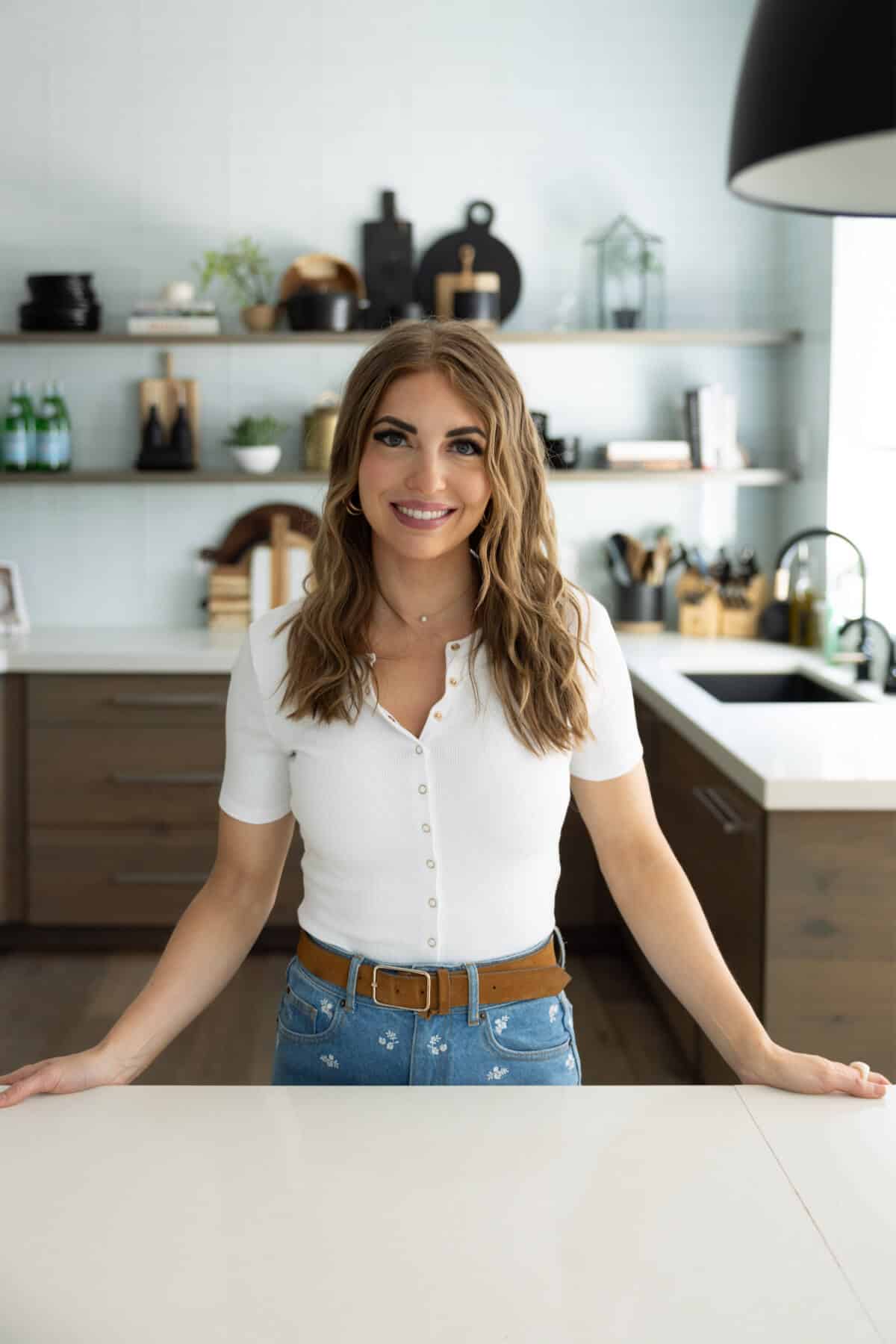

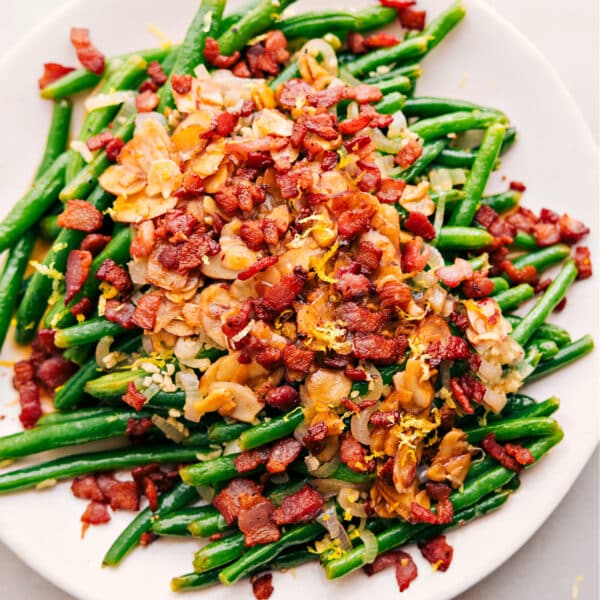
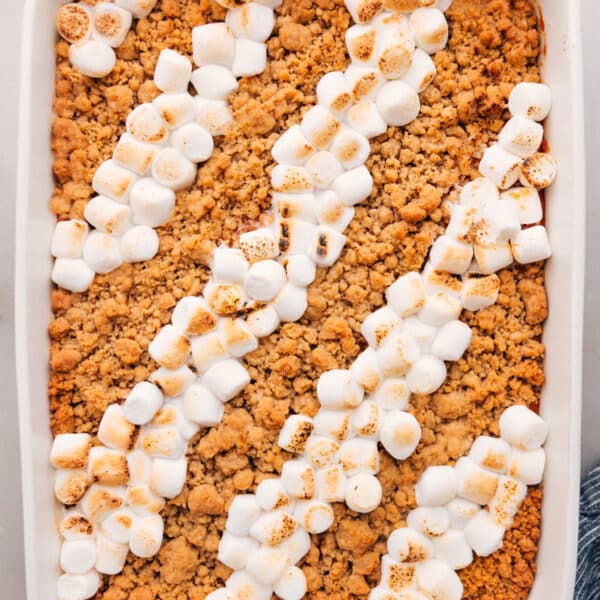
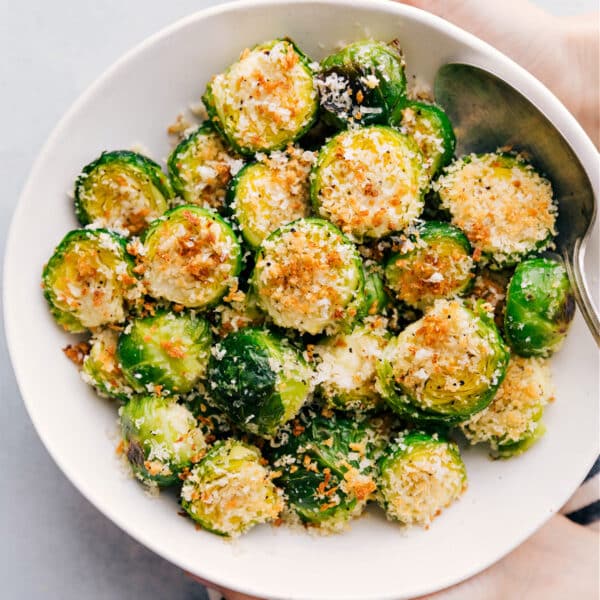
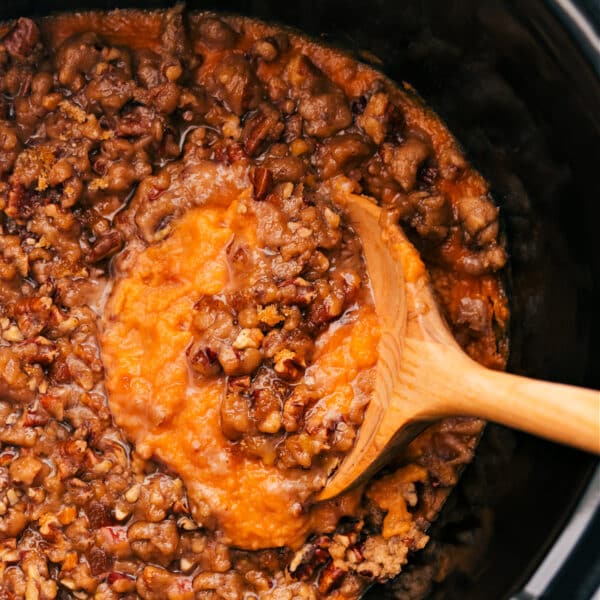









Hi! I’m wanting to make the savory butternut squash recipe. I noticed that maple syrup is listed in the ingredient list but not the instructions. Is it supposed to be added to the savory or just to the sweet version? Thanks!
Sorry, yes it goes in savory too! 🙂 Hope you love it!
As your sister, this is one of the only ways i’ll eat squash…and LOVE it. A new favorite fall recipe
So happy to hear that! Thank you!!